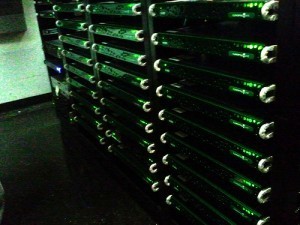Maybe some of you remember the Tarari Encoder Accelerator for Windows Media which came on market in 2005 as a FPGA loaded PCI board. It was a 10K$ investment but it could seriously boost your encoder performances and it was a transparent solution for all encoders integrating Windows Media SDK. That was maybe the only real reliable option to do HD encoding decently at that time. More confidential were the Ambric cards for accelerating MainConcept H.264 and MPEG-2 SDK, which were found to be working with Inlet Armada transcoding farm.
Since these days, Tarari boards vanished, Windows Media encoding has been somehow outshined by H.264 and CPU performances have made great jumps, but the needs for hardware accelerated encoding solutions is still there, mainly because :
- H.264 encoding is also hungrily crunching CPU cycles
- screen types to feed have exploded with mobile, tablets, connected TVs and all other OTT devices
- adaptive streaming requires far more versions of the same file that previously mono-bitrate encodings
- available rackspace is not endless and it’s not convenient to manage hundreds of encoding nodes
- new formats like 3D and SVC are demanding strong encoding power
- you like to play with cool high-end encoders and you have strong convincing skills when it comes to make your boss buy expen$ive hardware
So let’s take a look at the different options available on the market now !
Research and publish the best content.
Get Started for FREE
Sign up with Facebook Sign up with X
I don't have a Facebook or a X account
Already have an account: Login
Monitoring innovations in post-production, head-end, streaming, OTT, second-screen, UHDTV, multiscreen strategies & tools
Curated by
Nicolas Weil
 Your new post is loading... Your new post is loading...
 Your new post is loading... Your new post is loading...
|










